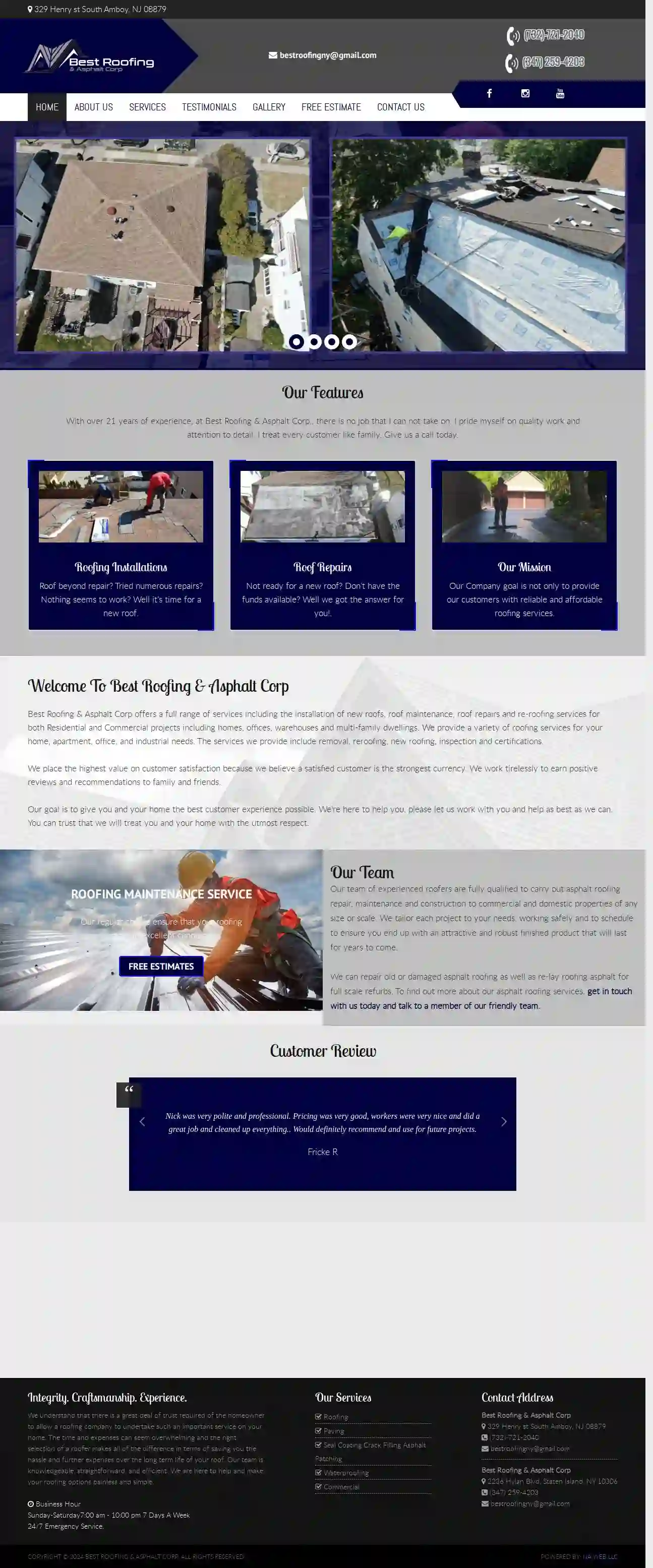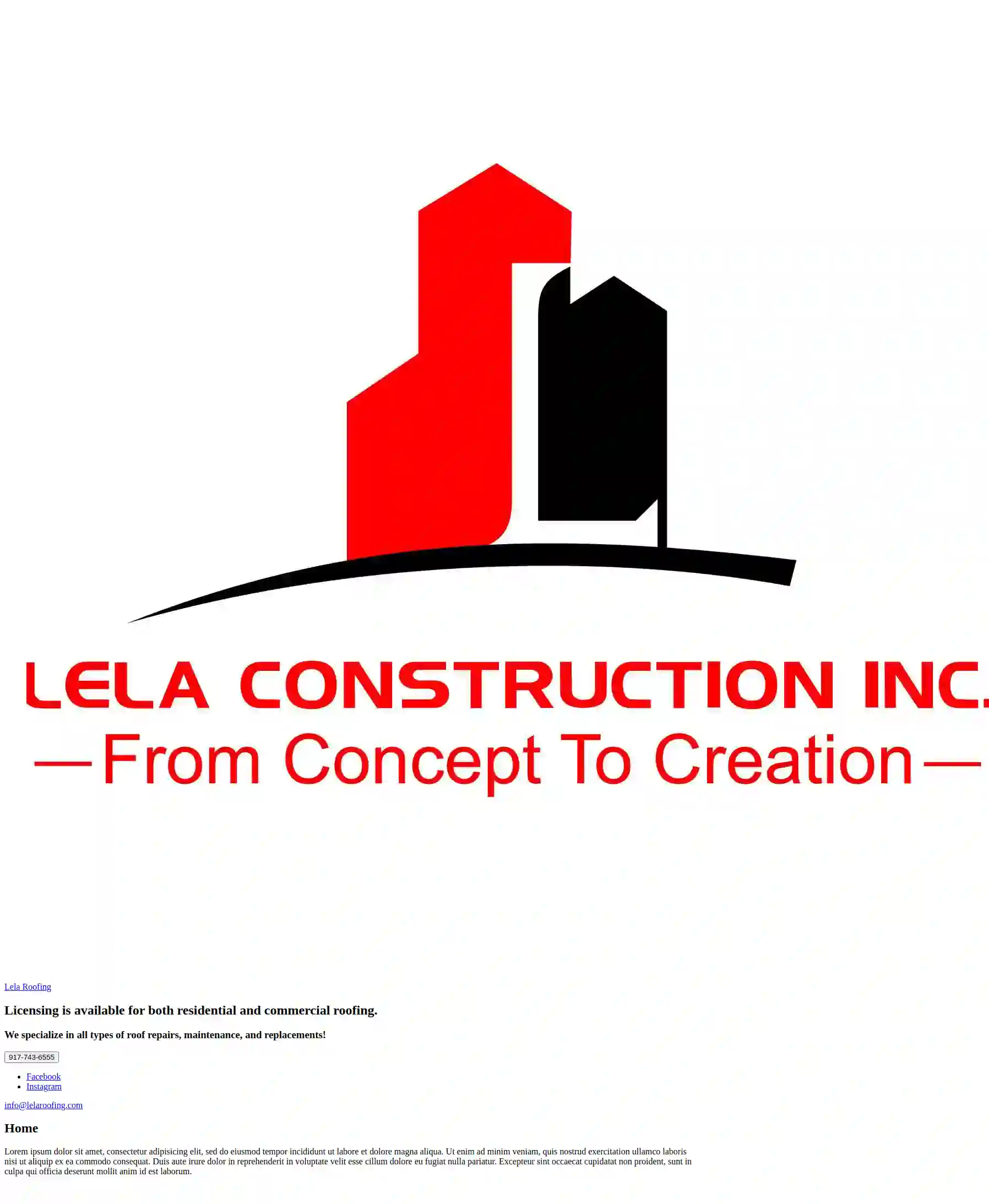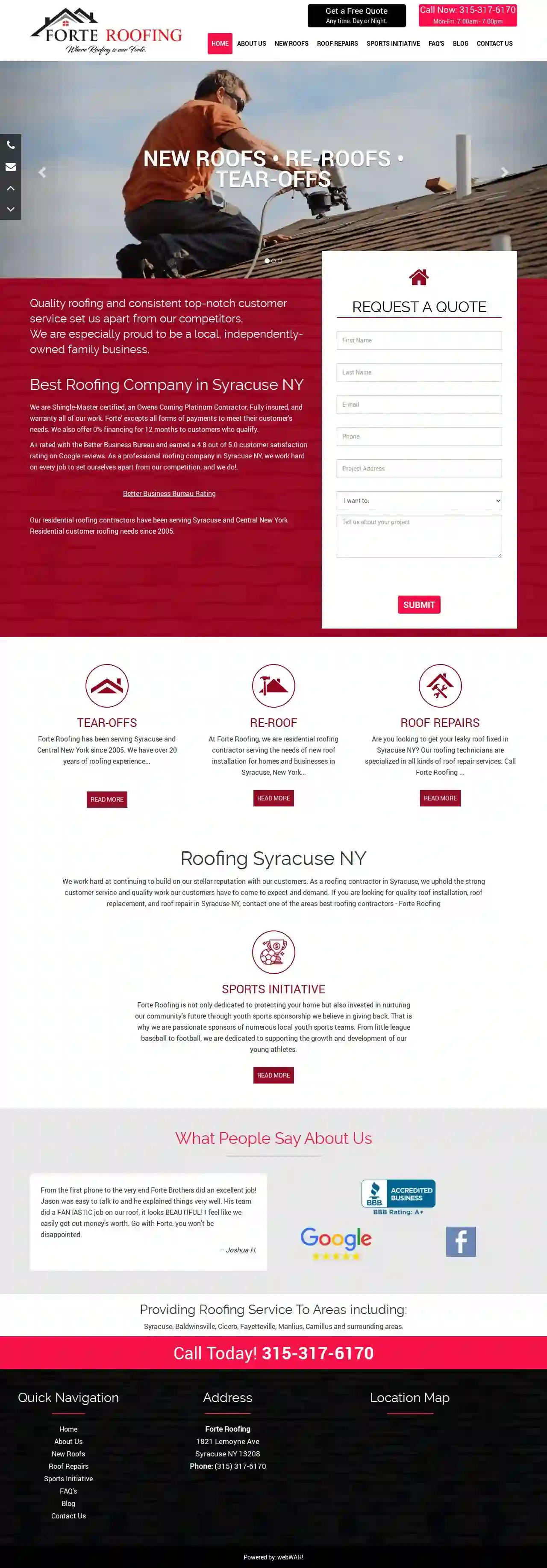Roofing Companies Long Beach
Top Roofing Contractor in Long Beach
Get up to 3 Roofing Company quotes for your project today! Compare profiles, reviews, accreditations, portfolio, etc... and choose the best service.

SAS Roofing & Waterproofing
4.8104 reviews552 Rugby Rd, Brooklyn, 11230, USSAS Roofing & Waterproofing is a family-owned and operated business serving the greater Brooklyn, New York area since 2000. We are dedicated to providing high-quality roofing services of any type, from repairs to new installations, for both residential and commercial properties. Our team of experienced professionals is committed to delivering exceptional workmanship and customer satisfaction. With over twelve years of hands-on experience, we have cultivated a reputation for reliability and excellence. We take pride in our heritage of quality and our tradition of using superior materials to ensure durability, longevity, and performance excellence. Safety and reliability are paramount in our operations, and we strive to exceed industry standards.
- Services
- Why Us?
- Our Team
- Testimonials
- Gallery
Get Quote
Gino's Roofing - Staten Island
4.822 reviewsStaten Island, USGino's Roofing is a fully licensed and insured roofing company serving Staten Island and Brooklyn, New York. With over 25 years of experience, we specialize in shingle roofing, flat roofing, gutter replacement, roof repair, and waterproofing. Our team of experts uses high-quality materials, including GAF Timberline roofing shingles and Firestone 180APP rubberized rolls, to ensure a durable and long-lasting roofing solution. We offer free estimates and a 30-year warranty on our work. Contact us today to schedule your roofing project!
- Services
- Why Us?
- Gallery
Get Quote
C R Construction
516 reviewsBronx, USCrystal General Construction. brings project management skills and extensive construction experience to your next project. When homeowners are looking for remodeling, they are looking for quality work that is built to last. Crystal General Construction. Masonry contractors, home renovations, home improvements, home remodeling services in New York by perfecting your residential and commercial construction, renovations and remodeling projects that will uphold the first class reputation. Crystal General Construction. surpasses in competition, not only in price, but value as well. Our crew of highly skilled craftsmen is very skilled in all aspects of work they perform. Crystal General Construction. is top rated Masonry contractors, home renovations, home improvement company in the area.
- Services
- Why Us?
- Gallery
Get Quote
Glen Roofing Corporation
4.960 reviews145 Valentine Lane#3B, Yonkers, 10705, USGlen Roofing Corporation is a trusted roofing contractor serving Riverdale and all of Westchester County, NY. With over 25 years of experience in the industry, we have the knowledge and skills to handle all your roofing needs, from repairs to replacements. We specialize in asphalt, terracotta, and metal roofing, and our team of highly skilled professionals is dedicated to providing exceptional service and craftsmanship. Beyond roofing, we offer siding, gutter, and renovation services to ensure your home or commercial building is protected and looking its best. We pride ourselves on our attentive customer service, detailed craftsmanship, and commitment to exceeding your expectations. Contact us today for a free in-home estimate and let us help you improve your space.
- Services
- Why Us?
- Our Team
- Testimonials
- Gallery
Get Quote
Best Roofing & Asphalt Corp
4.615 reviews329 Henry st, South Amboy, 08879, USBest Roofing & Asphalt Corp is a locally owned and operated roofing company serving both residential and commercial clients. With over 21 years of experience, we pride ourselves on providing high-quality workmanship, attention to detail, and exceptional customer service. We understand that your home is your castle, and we treat every project with the utmost care and respect. Our team of highly trained professionals is dedicated to providing you with the best possible roofing solutions, from roof installations and repairs to maintenance and restoration. We offer a wide range of services to meet your unique needs, using only the best products and materials. At Best Roofing & Asphalt Corp, we believe in building lasting relationships with our clients based on trust, integrity, and transparency. We are committed to providing you with a stress-free experience from start to finish.
- Services
- Why Us?
- Accreditations
- Our Team
- Testimonials
- Gallery
Get Quote
Kovacs Roofing Contracting
55 reviewsMilton, USKovacs Roofing Contracting is a professional roofing contractor in Milton, NY. We understand the importance of a well-maintained roof and are committed to delivering exceptional services that meet our clients' specific needs. Our team of highly skilled and experienced roofers is dedicated to providing top-notch workmanship, whether it's roof installation, repairs, or maintenance. We work with a wide range of materials, including asphalt shingles, metal, and cedar shakes, to ensure that we can meet our clients' unique needs and preferences. At Kovacs Roofing Contracting, we pride ourselves on our attention to detail and commitment to customer satisfaction. We strive to offer competitive pricing without compromising on quality and believe that everyone deserves a safe and reliable roof. We offer emergency roof repairs for those unexpected situations that require immediate attention and are available around the clock to provide prompt and reliable assistance.
- Services
- Why Us?
- Testimonials
- Gallery
Get Quote
Lela Construction INC
510 reviewsStaten Island, USLela Roofing is a professional roofing company that specializes in all types of roof repairs, maintenance, and replacements. With licensing available for both residential and commercial roofing, we are dedicated to providing top-notch services to our clients. Our team is committed to delivering exceptional results, and we pride ourselves on our attention to detail and commitment to customer satisfaction. Contact us today at 917-743-6555 or [email protected] to learn more about our services and how we can help you with your roofing needs.
- Services
- Why Us?
- Gallery
Get Quote
King Construction
57 reviewsYonkers, NY, 5 Morris Pl, 10705, USKing Construction is a professional construction company in New York that provides top-notch construction services. With years of experience and expertise in the industry, we have completed numerous construction projects, earning the trust and confidence of our clients. We prioritize quality craftsmanship, attention to detail, and timely project completion, making us the go-to choice for all your construction needs in NYC. Our team of highly skilled architects, engineers, and construction professionals work collaboratively to ensure the highest quality and customer satisfaction standards. Whether it's a residential or commercial project, we have the expertise and resources to handle projects of all sizes and complexities. Trust King Construction for unparalleled excellence in construction and experience the difference we can make in transforming your property.
- Services
- Why Us?
- Testimonials
- Gallery
Get Quote
Forte Roofing
4.899 reviewsSyracuse NY, 1821 Lemoyne Ave, Syracuse, 13208, USForte Roofing is a local, independently-owned family business with over 20 years of roofing experience. We are Shingle-Master certified, an Owens Corning Platinum Contractor, Fully insured, and warranty all of our work. We accept all forms of payments to meet our customers' needs and offer 0% financing for 12 months to customers who qualify. We are A+ rated with the Better Business Bureau and earned a 4.8 out of 5.0 customer satisfaction rating on Google reviews. As a professional roofing company in Syracuse NY, we work hard on every job to set ourselves apart from our competition, and we do! We are dedicated to protecting our customers' homes and also invested in nurturing our community's future through youth sports sponsorship. We believe in giving back, which is why we are passionate sponsors of numerous local youth sports teams.
- Services
- Why Us?
- Accreditations
- Our Team
- Testimonials
- Gallery
Get Quote
Syracuse Metal Roofing
51 reviewsSyracuse, USSyracuse Metal Roofing is a metal roof installation contractor in Syracuse, NY, specializing in residential and commercial metal roof installations. We promise a roof that looks great, is low maintenance, will stand the test of time, saves money, and adds value to your property. Our metal roofs are made from the strongest materials and coatings, backed by lifetime warranties that can be passed to the next owner. We offer upfront pricing and financing options to make metal roofs a reality for all budgets.
- Services
- Why Us?
- Gallery
Get Quote
Over 17,196+ Roofing Contractors registered
Our roofing experts operate in Long Beach and surrounding areas!
Roofyng.com has curated and vetted Top Roofing Contractors near Long Beach. Find a top & reliable business today.
Frequently Asked Questions About Roofing Companies
- Experience: Companies with a solid track record and years of experience in the industry.
- Licensing and Insurance: Verify they are properly licensed to operate in your area and carry adequate insurance to protect you from liability.
- Certifications: Look for certifications from reputable organizations, demonstrating expertise in specific roofing materials or techniques.
- Positive Reviews: Check online reviews and testimonials from previous customers.
- Professionalism: Choose a company that communicates clearly, provides detailed estimates, and has a courteous and responsive team.
- Hot Climates: Opt for light-colored or reflective roofing materials to reduce heat absorption. Consider tile roofs for their thermal mass and heat resistance.
- Cold Climates: Ensure your roof has adequate insulation and ventilation to prevent ice dams and moisture buildup. Metal roofs can shed snow effectively.
- High-Wind Areas: Choose roofing systems with high wind ratings and properly installed hurricane straps or clips to enhance wind resistance.
- Areas with Heavy Rainfall: Ensure your roof has proper drainage and a waterproof membrane to prevent leaks.
How do I find a good roofing company?
How often should I clean my gutters?
What is a roof valley, and why is it important?
How do I choose the right type of roof for my climate?
How do I find a good roofing company?
- Experience: Companies with a solid track record and years of experience in the industry.
- Licensing and Insurance: Verify they are properly licensed to operate in your area and carry adequate insurance to protect you from liability.
- Certifications: Look for certifications from reputable organizations, demonstrating expertise in specific roofing materials or techniques.
- Positive Reviews: Check online reviews and testimonials from previous customers.
- Professionalism: Choose a company that communicates clearly, provides detailed estimates, and has a courteous and responsive team.
How often should I clean my gutters?
What is a roof valley, and why is it important?
How do I choose the right type of roof for my climate?
- Hot Climates: Opt for light-colored or reflective roofing materials to reduce heat absorption. Consider tile roofs for their thermal mass and heat resistance.
- Cold Climates: Ensure your roof has adequate insulation and ventilation to prevent ice dams and moisture buildup. Metal roofs can shed snow effectively.
- High-Wind Areas: Choose roofing systems with high wind ratings and properly installed hurricane straps or clips to enhance wind resistance.
- Areas with Heavy Rainfall: Ensure your roof has proper drainage and a waterproof membrane to prevent leaks.